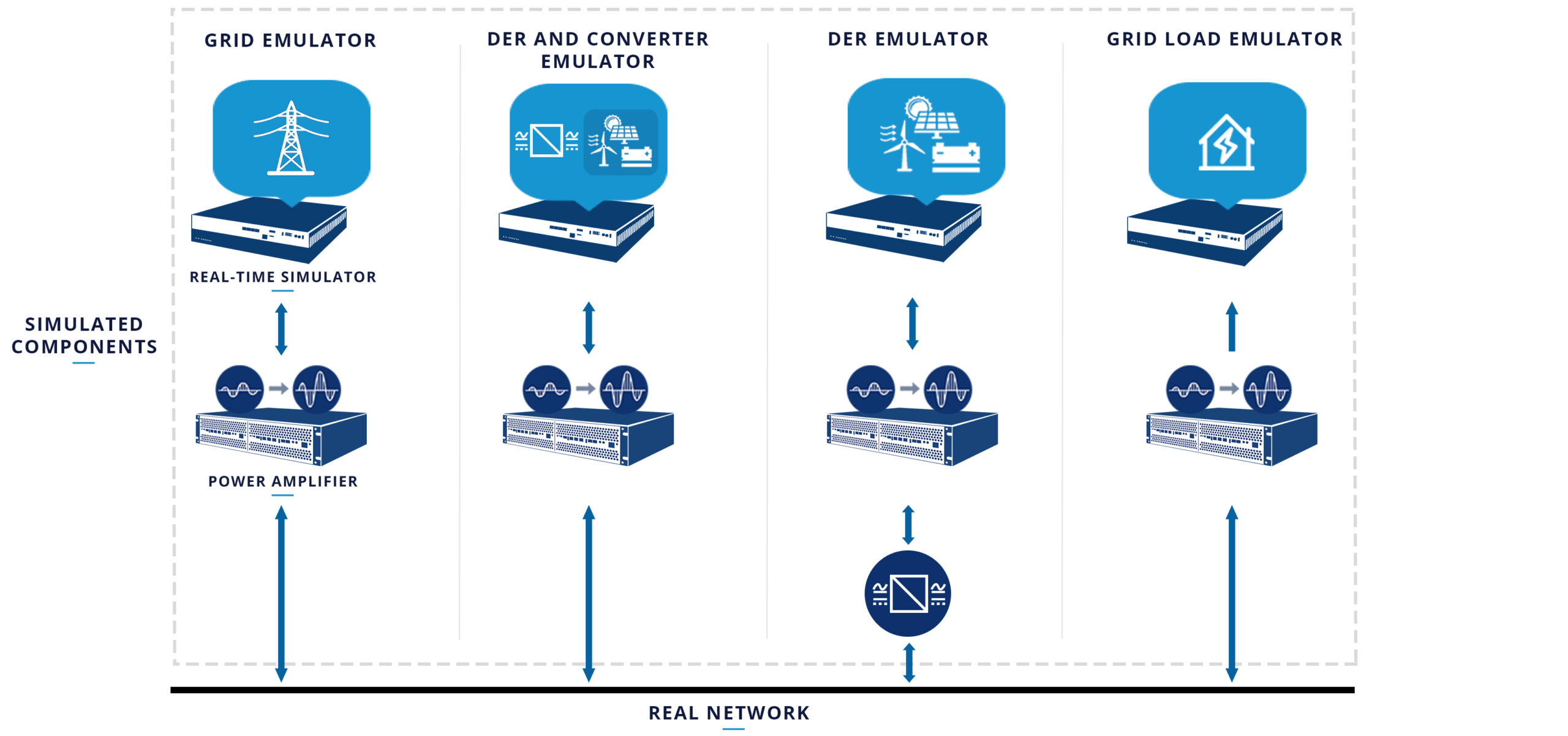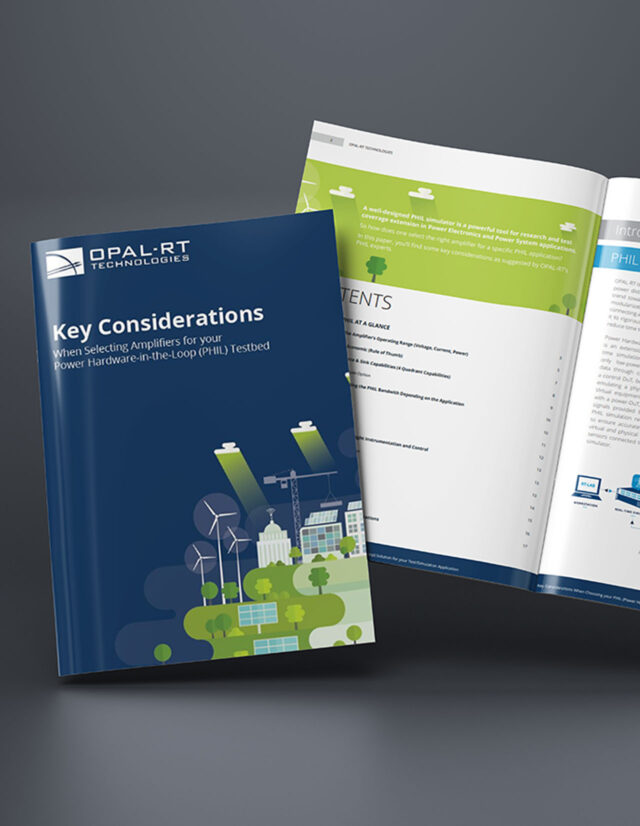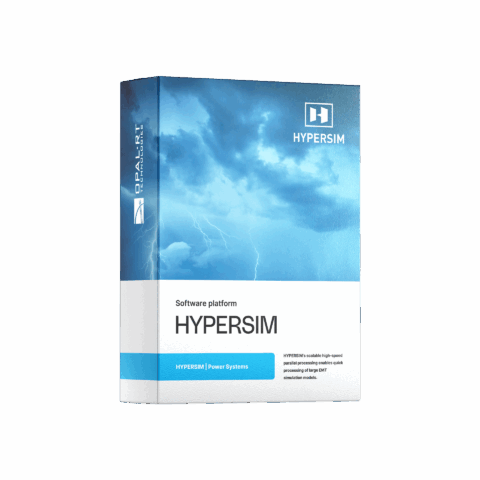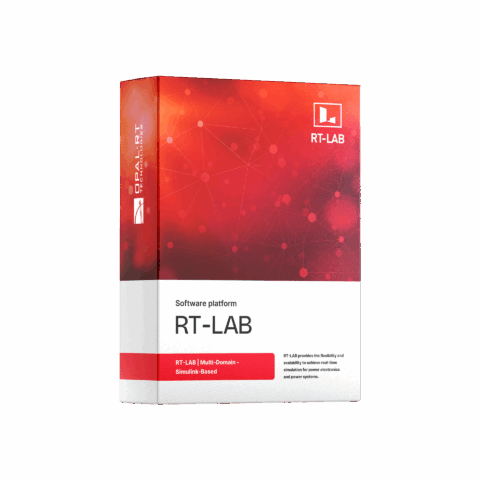OP1400
The OP1400 is a 4-quadrant power amplifier featuring high-speed and low-latency closed loop communications for real-time digital simulation. The power amplifier is designed to be used as a power hardware-in-the-loop (PHIL) testing tool in combination with an OPAL-RT simulator to form a complete PHIL testing solution. Our OP1400 ensures precision and flexibility for demanding 4-quadrant PHIL applications.
Standard configurations *others available upon request
| OP1400-10 | Amplification units (5 kW) | 1 |
| Available rated power | 1 x 5 kW | |
| OP1400-20 | Amplification units (5 kW) | 2 |
| Available rated power | 2 x 5 kW | |
| OP1400-30 | Amplification units (5 kW) | 3 |
| Available rated power | 3 x 5 kW | |
| OP1400-60 | Amplification units (5 kW) | 6 |
| Available rated power | 6 x 5 kW |
Amplification unit electrical specifications
| AC Mode rated voltage | 3-phase, 120 VL-N (208 VL-L) |
| DC Mode rated voltage | 0 to 400 VDC |
| Maximum transient current | 20 A peak |
| Sourcing / sinking capability | 100% source and sink, no dissipation |
PHIL performance
| Mode of operation | Voltage and current control |
| Closed-Loop Bandwidth | DC to 10 kHz (-3dB) |
| THD | < 0.75% |
| Time Delay Input to Output | 5.5us to 8.3us |
| High Speed Communication Link | up to 6 Gbps SFP Link, compatible with OPAL-RT simulators |
PHIL-ENABLED POWER SYSTEMS TESTING
Flexibility in a constantly changing world
Seamlessly integrate real and simulated components. Emulate grids, distributed energy resources (DERs), converters, and loads with high-fidelity testing for next-gen power systems.

FEATURES
Optimize your testing and validation
01
High performance and fidelity
The OP1400 4-quadrant PHIL amplifier is equipped with up to 6 amplification units of 5 kW each, in current and voltage control modes. It offers a closed-loop bandwidth up to 10 kHz with a THD of less than 0.75 %. It has a non-dissipative, 100% power sinking capability.
02
03
High-speed communication link
Leverage high-speed, low-latency 6.6 Gbps optical interfaces to seamlessly close the loop between the simulator and amplifier.
FAQ
Find the answers to your questions
What is the OP1400 4-quadrant power amplifier used for?
Our OP1400 4-quadrant power amplifier is designed for real-time digital simulation environments, providing high-speed and low-latency closed-loop communications. We use it primarily as part of a Power Hardware-in-the-Loop (PHIL) testing setup, enabling engineers to seamlessly integrate real and simulated components like grids, DERs, converters, and loads.
What makes the 4-quadrant power amplifier ideal for PHIL testing?
We engineered the OP1400 4-quadrant power amplifier with full sourcing and sinking capabilities, rapid time delays of just 5.5 to 8.3 microseconds, and a closed-loop bandwidth up to 10 kHz. These features ensure high-fidelity emulation, minimal distortion (<0.75% THD), and robust communication links (up to 6 Gbps) with our OPAL-RT simulators, making it an ideal solution for flexible, non-destructive PHIL testing.
What configurations are available for the OP1400 4-quadrant power amplifier?
We offer standard OP1400 configurations based on amplification units of 5 kW each. Depending on your needs, you can choose from models delivering 5 kW, 10 kW, 15 kW, or 30 kW rated power. If required, we can provide custom configurations beyond these options to meet your specific testing requirements.
How does OPAL-RT’s OP1400 4-quadrant power amplifier enhance real-time simulation performance?
Our OP1400 4-quadrant power amplifier ensures that real components behave accurately within a simulated environment, thanks to its voltage and current control modes, high-speed SFP communication links, and precise transient handling (20 A peak). This real-time performance is critical for next-generation power systems development across industries like energy, automotive, and aerospace.
What should engineers consider when selecting a 4-quadrant power amplifier for PHIL applications?
When choosing a 4-quadrant power amplifier like the OP1400, engineers should consider factors such as closed-loop bandwidth, time delay, sourcing/sinking capabilities, transient response, and software compatibility. We offer a detailed white paper to guide you through these essential considerations, helping ensure you select the right amplifier to meet your PHIL testing goals.
Resources
Want to learn more?
1
PHIL simulation
Explore how power hardware-in-the-loop simulation is revolutionizing the HIL industry. Access presentations, webinars, success stories, and more.
2
Microgrid applications
Microgrids present unique challenges compared to traditional power grids. Discover our advanced testing solutions through brochures, webinars, demos, and success stories.
3
Support center
Get the help you need, all in one place. Whether it’s technical support, software downloads, or access to key resources, our support center is here to assist you quickly and efficiently.



